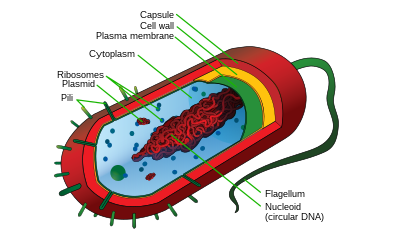Think of cells as tiny factories—imagine a chocolate
factory—where there are inputs and outputs.
 In a chocolate factory, the inputs
are cocoa beans, sugar, milk, maybe some nuts or fruit. Do we need to know the
40,000 character IUPAC name for cocoa to understand this? No! What are the
outputs of a chocolate factory? Sweet, melt-in-your-mouth chocolate bars that
can potentially be added to s'mores, which can then be input to your cells. The
really interesting part of this process (overlooking the delicious chocolate
output, of course) is the process inside the factory that turns raw inputs into
a useful output. A lot of work went on inside the factory to make bitter cocoa
beans into something worth eating. So it is with cells.
In a chocolate factory, the inputs
are cocoa beans, sugar, milk, maybe some nuts or fruit. Do we need to know the
40,000 character IUPAC name for cocoa to understand this? No! What are the
outputs of a chocolate factory? Sweet, melt-in-your-mouth chocolate bars that
can potentially be added to s'mores, which can then be input to your cells. The
really interesting part of this process (overlooking the delicious chocolate
output, of course) is the process inside the factory that turns raw inputs into
a useful output. A lot of work went on inside the factory to make bitter cocoa
beans into something worth eating. So it is with cells.Cells Need Inputs (aka Food)
 Cells can take as inputs a wide variety of things.
Some can take in sunlight, others sugars and carbohydrates, salts, gases (such
as carbon dioxide or oxygen), water or oil, proteins, small molecules and metals
... you name it. Cells have been found living in some of the most bizarre
places on earth precisely because of this broad range of potential inputs.
Obviously, not all cells can handle all inputs. Your cells don't much care for
cyanide, while many bacteria don't get along well with antibiotics. Neither a
dog, nor E. coli can utilize sunlight
the way a tomato plant or an algae can. A cell's possible inputs depend on its
genetics (its DNA) which we'll get to in a sec.
Cells can take as inputs a wide variety of things.
Some can take in sunlight, others sugars and carbohydrates, salts, gases (such
as carbon dioxide or oxygen), water or oil, proteins, small molecules and metals
... you name it. Cells have been found living in some of the most bizarre
places on earth precisely because of this broad range of potential inputs.
Obviously, not all cells can handle all inputs. Your cells don't much care for
cyanide, while many bacteria don't get along well with antibiotics. Neither a
dog, nor E. coli can utilize sunlight
the way a tomato plant or an algae can. A cell's possible inputs depend on its
genetics (its DNA) which we'll get to in a sec.Cells Make Outputs
While cells outputs are also very diverse, there are
some outputs that are universal. Cells need to maintain themselves, which means
making new DNA, RNA, membranes and proteins. Cells periodically reproduce. That
means making new cells with DNA, RNA, membranes and proteins. Proliferation is
a fundamental aspect of being alive. To stay alive, cells must extract energy
from their surroundings and convert it to a useful chemical form, usually ATP,
or store it as sugar. All cells-from Y.pestis (more commonly known to cause the black plague) to Lassie's-need to
maintain themselves , and reproduce.
But cells also produce outputs useful to humans, as attested by this rousing ditty:
What Determines the Outputs?
That said, once a cell has accomplished those simple
"outputs", then there's a world of possible outputs that can be
produced. Cells can output communications molecules, sunscreen, starch,
poisons, oils, eerie green glow, antibiotic resistance, hard shell-like
coverings, and the list goes on. What a cell outputs in nature is, once again,
dictated by its genetics. Cells have innumerable survival strategies, each one
producing different outputs according to the cells needs. A cell's output is of
great interest to the biotech world, especially if it can be altered to suit
our needs. Cells are little chemical factories that can be used to cheaply
manufacture a variety of products, such as anti-malarial drugs and plastic. By
shifting around the inner machinery of the factory, it's possible to change the
outputs. Imagine our chocolate factory; suppose we added peanuts as an input,
and changed some of the machinery inside. Voila! Chocolate peanut butter cups.
A large branch of biotechnology is dedicated to changing that inner cellular
machinery in order to manufacture a desired product.
Cellular Machinery and the Four Ingredients
That said, cells don't often have industrial
manufacturing machinery inside them (not that I've encountered, at least). For
that job, we have DNA, RNA, membranes and proteins.

No comments:
Post a Comment
We are always glad when someone catches a mistake, has more to add, or just likes our work. Let us know about it!